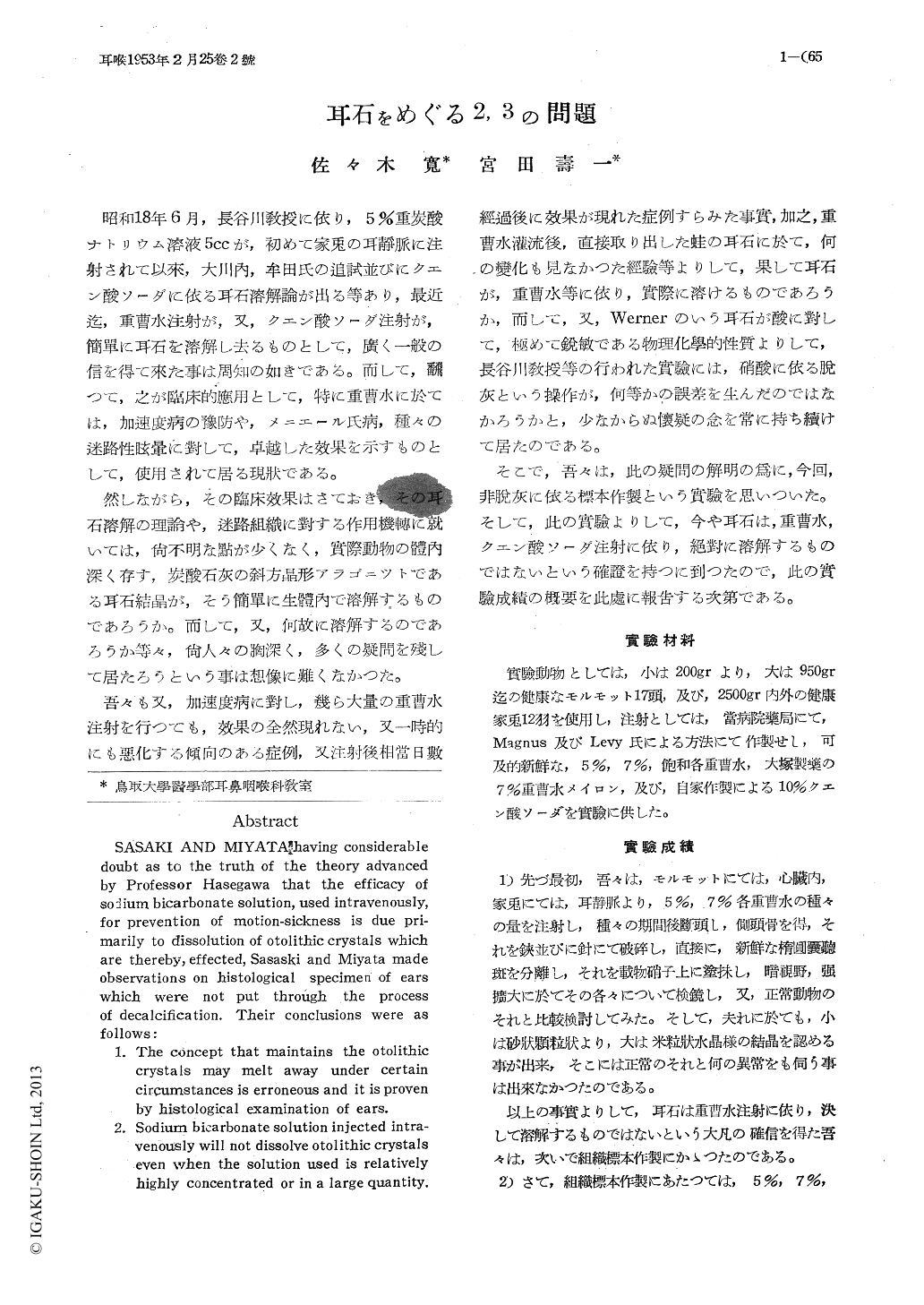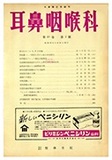- 有料閲覧
- 文献概要
- 1ページ目
昭和18年6月,長谷川教授に依り,5%重炭酸ナトリウム溶液5ccが,初めて家兎の耳靜脈に注射されて以來,大川内,牟田氏の追試並びにクエン酸ソーダに依る耳石溶解論が出る等あり,最近迄,重曹水注射が,又,クエン酸ソーダ注射が,簡單に耳石を溶解し去るものとして,廣く一般の信を得て來た事は周知の如きである。而して,飜つて,之が臨床的應用として,特に重曹水に於ては,加速度病の豫防や,メニエール氏病,種々の迷路性眩暈に對して,卓越した効果を示すものとして,使用されて居る現状である。
然しながら,その臨床効果はさておき,その耳石溶解の理論や,迷路組織に對する作用機轉に就いては,尚不明な點が少くなく,實際動物の體内深く存す,炭酸石灰の斜方晶形アラゴニツトである耳石結晶が,そう簡單に生體内で溶解するものであろうか。而して,又,何故に溶解するのであろうか等々,尚人々の胸深く,多くの疑問を殘して居たろうという事は想像に難くなかつた。
SASAKI AND MIYATA having considerable doubt as to the truth of the theory advanced by Professor Hasegawa that the efficacy of sodium bicarbonate solution, used intravenously, for prevention of motion-sickness is due pri-marily to dissolution of otolithic crystals which are thereby, effected, Sasaski and Miyata made observations on histological specimen of ears which were not put through the process of decalcification. Their conclusions were as follows: 1. The concept that maintains the otolithic crystals may melt away under certain circumstances is erroneous and it is proven by histological examination of ears.
2. Sodium bicarbonate solution injected intra-venously will not dissolve otolithic crystals even when the solution used is relatively highly concentrated or in a large quantity.

Copyright © 1953, Igaku-Shoin Ltd. All rights reserved.


